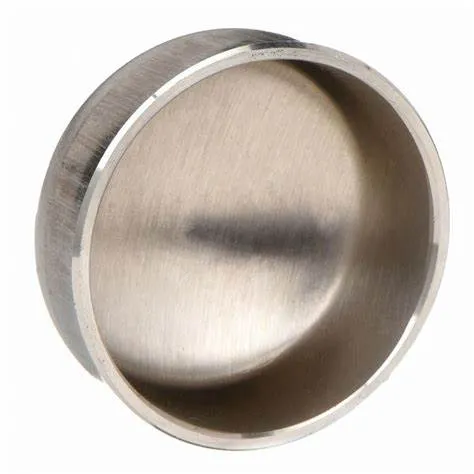-
Cangzhou Yulong Steel Co., Ltd.
-
Phone:
+86 13303177267 -
Email:
admin@ylsteelfittings.com
- English
- Arabic
- Italian
- Spanish
- Portuguese
- German
- kazakh
- Persian
- Greek
- French
- Russian
- Polish
- Thai
- Indonesian
- Vietnamese
- Zulu
- Korean
- Uzbek
- Hindi
- Serbian
- Malay
- Ukrainian
- Gujarati
- Haitian Creole
- hausa
- hawaiian
- Hebrew
- Miao
- Hungarian
- Icelandic
- igbo
- irish
- Japanese
- Javanese
- Kannada
- Khmer
- Rwandese
- Afrikaans
- Albanian
- Amharic
- Armenian
- Azerbaijani
- Basque
- Belarusian
- Bengali
- Bosnian
- Bulgarian
- Catalan
- Cebuano
- China
- China (Taiwan)
- Corsican
- Croatian
- Czech
- Danish
- Esperanto
- Estonian
- Finnish
- Frisian
- Galician
- Georgian
- Kurdish
- Kyrgyz
- Lao
- Latin
- Latvian
- Lithuanian
- Luxembourgish
- Macedonian
- Malgashi
- Malayalam
- Maltese
- Maori
- Marathi
- Mongolian
- Myanmar
- Nepali
- Norwegian
- Norwegian
- Occitan
- Pashto
- Dutch
- Punjabi
- Romanian
- Samoan
- Scottish Gaelic
- Sesotho
- Shona
- Sindhi
- Sinhala
- Slovak
- Slovenian
- Somali
- Sundanese
- Swahili
- Swedish
- Tagalog
- Tajik
- Tamil
- Tatar
- Telugu
- Turkish
- Turkmen
- Urdu
- Uighur
- Welsh
- Bantu
- Yiddish
- Yoruba

Oct . 08, 2024 21:09 Back to list
Understanding the Differences Between Seam and Seamless Pipes in Various Applications
Seam and Seamless Pipe Understanding the Differences and Applications
Pipes are an essential part of various industries, serving as conduits for fluids, gases, and solids. Among the differing types of pipes, seamless and seam pipes are two prevalent forms that cater to distinct needs. Understanding the differences between these pipe types is crucial for selecting the right material for specific applications.
Definition and Manufacturing Process
Seam pipes, also known as welded pipes, are constructed by welding together flat steel plates or strips. The welding process creates a seam along the length of the pipe. This seam can be formed using various methods, such as electric resistance welding (ERW) or submerged arc welding (SAW). The fabrication process enables manufacturers to produce long lengths of pipe, but it also introduces potential weaknesses along the welded seam.
In contrast, seamless pipes are made from solid round steel billets. The manufacturing process does not involve any welding; instead, the billets are heated and then drilled or extruded to create a hollow tube. This results in a pipe with a uniform structure and no weld seams, eliminating the weaknesses associated with welded joints.
Strength and Durability
One of the most significant differences between seam and seamless pipes is their strength and durability. Seamless pipes are generally stronger than their welded counterparts. The absence of weld seams reduces the risk of leaks and failures under high pressure and temperature, making seamless pipes more suitable for high-stress applications, such as oil and gas extraction, power generation, and chemical processing.
seam and seamless pipe

Seam pipes, while adequate for lower-pressure applications, may be more prone to failure under extreme conditions. However, they are often preferred for construction and plumbing applications where the pressure requirements are moderate.
Cost and Applications
When it comes to cost, seam pipes are typically less expensive to manufacture than seamless pipes. The welding process is less complex and requires fewer raw materials, making seam pipes an economical choice for a variety of applications. They are commonly used in structural projects, water supply systems, and HVAC applications.
Seamless pipes, while more costly, are indispensable in industries that demand high reliability and performance. They are the standard choice for projects that involve high pressures and temperatures, such as aerospace, chemical processing, and the petrochemical industry. The superior mechanical properties of seamless pipes make them ideal for applications where safety and integrity are paramount.
Conclusion
In summarizing the distinctions between seam and seamless pipes, it is clear that the choice between the two largely depends on the specific requirements of the application. Seam pipes provide a cost-effective solution for moderate pressure uses, while seamless pipes offer enhanced strength and reliability for high-stress applications. By understanding these differences, industries can make informed decisions to ensure safety and efficiency in their operations.
Latest news
-
ANSI 150P SS304 SO FLANGE
NewsFeb.14,2025
-
ASTM A333GR6 STEEL PIPE
NewsJan.20,2025
-
ANSI B16.5 WELDING NECK FLANGE
NewsJan.15,2026
-
ANSI B16.5 SLIP-ON FLANGE
NewsApr.19,2024
-
SABS 1123 FLANGE
NewsJan.15,2025
-
DIN86044 PLATE FLANGE
NewsApr.19,2024
-
DIN2527 BLIND FLANGE
NewsApr.12,2024
-
JIS B2311 Butt-Welding Fittings LR/SR 45°/90° /180°Seamless/Weld
NewsApr.23,2024











